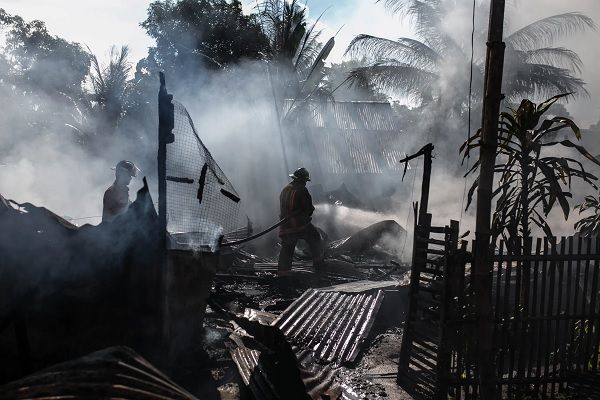Have you ever seen thermal camera images while watching the news on TV? There’s a pretty good reason why they’re featured so often – thermal vision looks pretty impressive. While this technology doesn’t quite allow us to see through walls, it’s undoubtedly the closest thing we’ve got to x-ray vision.
Thermal imaging cameras have many applications. In this article, we’ll be taking a closer look at the most important ones, or how these convenient gadgets can save people’s lives and prevent disasters:
1. Firefighting
When it comes to disaster uses for thermal imaging cameras, firefighting takes the top spot.
These practical devices are of great assistance to firefighters, who use them to locate survivors in burning buildings, where ash, smoke, fog, dust, and other contaminants all contribute to low visibility. Having a thermal imaging camera in such conditions is vital.
However, thermal imaging cameras (TICs) can also help detect hotspots, as well as further potential sources of ignition. They’re also capable of indicating the presence of still-burning fires that are often stemming from unexpected locations, for example inside cavity walls.
In the last two decades, TICs have saved dozens of potential victims by allowing firefighters to locate and remove these individuals from dangerous low-visibility conditions.
2. First Response
Thermal imaging cameras are especially useful to locate threats to the first responders at night, such as suspects, dogs, and other potential threats.
They can be of great help with locating fugitives or lost children in darkness and dense foliage. TICs are often used as force multipliers in such circumstances, allowing fewer people to cover large search areas accurately and rapidly.
Nowadays, TICs are also often used during drug busts. They are capable of spotting households with suspiciously high temperatures. In that way, they can indicate the presence of grow-lights, which are almost always used for illegal purposes.
Besides law enforcement officers and other first responders, TICs are also used by the military. In fact, army applications are what made these devices so elaborate in the first place.
3. Gas Leak Detection
Millions of industrial, commercial, and residential premises everywhere around the world use natural gas. As you already know, gas is highly flammable – when it leaks, it can lead to fire and explosion. In addition, it can easily cause carbon monoxide poisoning.
Fortunately, specially calibrated TICs can be of great help in preventing these disasters. They are capable of detecting the presence of particular gases inside homes and at industrial sites. These gases may be invisible to the naked eye but are easy to spot with a thermal imaging camera.
What’s more, many companies use a range of thermal cameras for all kinds of safety checks. Some TICs can detect various electrical and mechanical faults, and can help with reducing the risk of premature product failure.
4. Disease Control
Thermal imaging cameras are also used in the field of medicine, both for humans and animals. These devices are often used to catch circulation problems before they get worse, locate the source of arthritis, and even detect cancer.
Doctors and veterinarians alike can use TICs to detect skeletal and muscular issues early on. One example of using TICs for veterinary purposes is the increased use of these gadgets to fit horses with safer saddles.
However, what makes these cameras so useful in the field of healthcare is that they can be used for effective disease control. Thermal imaging cameras are often used to check passengers at locations such as airports for elevated temperatures. Obviously, this makes them very practical in detecting fevers during pandemics, such as the currently ongoing Coronavirus outbreak.
5. Unwanted Pests
Having unwanted pests inside (or below) the house is one of the homeowner’s worst nightmares. If left untreated, this issue can quickly turn into a disaster. The list of undesired animals with a history of transmitting diseases and causing damage in human habitation is long and includes dozens of species.
Fortunately, thermal imaging cameras can be of great help with some of these pests. TICs can assist homeowners with finding exactly where rats, possums, and other animals are located in the house.
Thermal imaging is especially useful when it comes to termite detection. TICs are capable of detecting areas with potential termite activity in residential and commercial buildings. The damage these pests make often leads to foundation issues and a whole host of other disasters – detecting them with a TIC helps with quicker and more effective eradication.
Excluding basic engineering uses, the emergency services are still among the most common users of thermal imaging cameras. This extremely useful technology is deployed on a daily basis in scenarios including search and rescue, night-time police pursuits, drug busts, and firefighting.
There are many more TIC applications beyond disaster uses, though. They are also employed in wildlife surveys, maritime navigation, surveillance, aircraft maintenance, heat loss detection, welding, and many other operations.
Kevin has gone through an extensive home renovation with his son, which he has both
thoroughly enjoyed, and dreaded every morning. He is now the proud owner of half his dream house (the other half has been waiting for spring). You can read more of Kevin’s work on PlainHelp.
